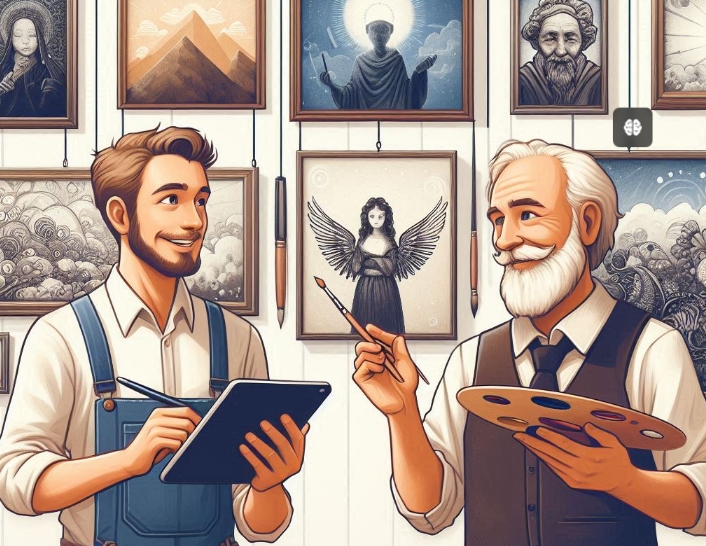In the dynamic intersection of art and technology, a debate brews over the impact of Non-Fungible Tokens (NFTs) on traditional art forms. As digital artworks minted as NFTs gain popularity and value, questions arise about their implications for real art and the survival of traditional artists.
NFTs vs Traditional Art NFTs represent digital assets secured on blockchain technology, offering proof of ownership and authenticity. This innovation has democratized art ownership, allowing digital creators to monetize their work through decentralized platforms and auctions.
In contrast, traditional art encompasses physical mediums like paintings, sculptures, and mixed media, valued for their craftsmanship, historical significance, and tactile presence.
The Digital Revolution NFTs have sparked a digital revolution in the art world, challenging traditional models of art production, distribution, and consumption:
Accessibility and Inclusivity: NFTs enable global participation in the art market, breaking down barriers to entry for artists and collectors worldwide.
Monetization of Digital Art: Artists can earn royalties from NFT sales and maintain control over their intellectual property rights through smart contracts, transforming digital creations into valuable assets.
Technological Innovation: Blockchain technology ensures transparency and security in transactions, mitigating concerns about forgery and theft in the digital realm.
Can Real Artists Survive? The rise of NFTs prompts critical reflections on the future of traditional artists:
Adaptation and Innovation: Real artists are adapting to the digital landscape by exploring hybrid models that incorporate digital tools while preserving traditional techniques and craftsmanship.
Cultural and Artistic Integrity: Traditional art holds intrinsic value rooted in cultural heritage, craftsmanship, and tangible experience, fostering deeper connections between artists, their work, and audiences.
Sustainability and Longevity: While NFTs offer new avenues for creative expression and revenue generation, the enduring appeal of traditional art lies in its enduring physical presence and timeless significance.
Looking Ahead The coexistence of NFTs and traditional art signifies a broader evolution in artistic expression and consumption. As technology continues to evolve, artists must navigate these shifts with creativity, resilience, and a commitment to preserving art's cultural legacy.
The juxtaposition of NFTs and traditional art raises complex questions about creativity, authenticity, and the evolving role of technology in shaping artistic practices. While NFTs expand opportunities for digital creators, the enduring appeal of traditional art underscores its cultural and artistic significance in an increasingly digital world.
As artists and enthusiasts navigate this transformative landscape, the future of art hinges on embracing innovation while honoring the timeless traditions that define artistic expression across generations.
